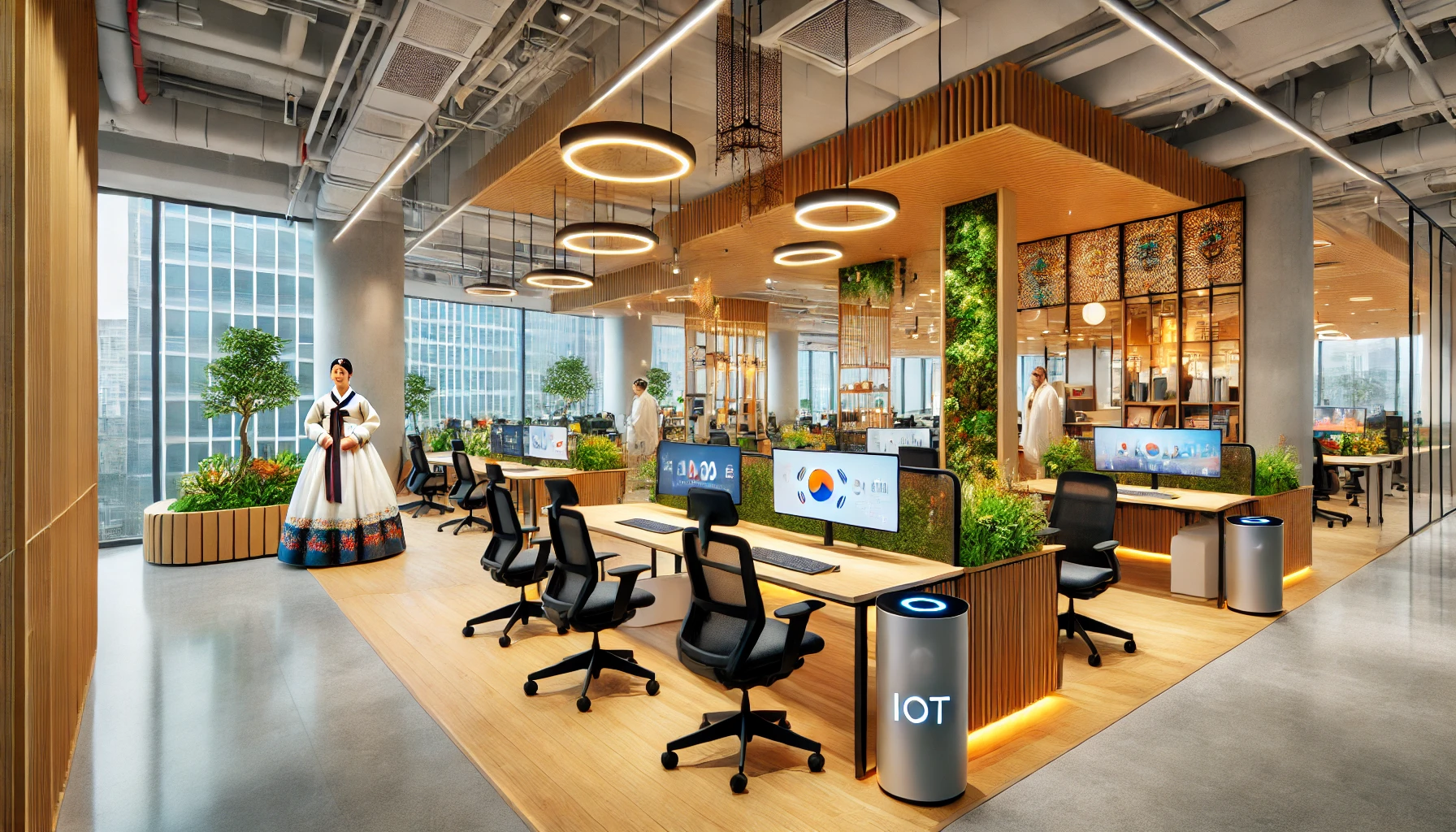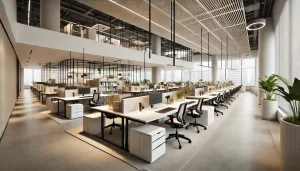
Modern Office Interior Trends in Korea for Maximum Productivity
Office interior design is one of the key factors in creating a comfortable and productive work environment. In Korea, office design trends continue to evolve to meet the needs of modern companies. From open space concepts to the use of smart technology, office interiors in Korea are becoming more innovative and ergonomic. With the right planning, companies in Korea can enhance work efficiency and employee well-being.

1. Minimalist and Functional Concept
Minimalist design is very popular in Korea as it gives a clean, tidy, and spacious impression. Companies often use multifunctional furniture and efficient layouts to optimize workspaces. Neutral colors such as white, gray, and beige are commonly used to create a calm and professional atmosphere. In Korean office interior trends, this concept helps improve employee focus and comfort.
2. Use of Smart Technology
Technology plays a major role in modern office interiors in Korea. Many offices adopt automated lighting systems, smart desks, and IoT-based conference rooms. This not only increases work efficiency but also creates a more flexible environment for employees. Companies in Korea are also starting to implement hybrid work systems with technology that supports remote communication.
3. Flexible Workspaces and Open Space Concept
The open space concept is increasingly favored as it allows for better team collaboration. Additionally, many offices provide flexible work areas such as hot desking and relaxation spaces to enhance creativity and employee comfort. Office design in Korea also prioritizes spaces that can be adjusted according to team needs.
4. Eco-Friendly Office Design
Many companies in Korea are beginning to adopt eco-friendly designs by using sustainable materials, indoor plants, and natural lighting to reduce energy consumption. This trend not only benefits the environment but also has a positive impact on employee health and well-being. The green office concept is becoming more widely implemented in Korean office interiors.
5. Korean Cultural Elements in Office Design
Some offices in Korea incorporate traditional cultural elements into their interior designs, such as the use of natural wood elements, tatami-style meeting rooms, or decorations with hanbok motifs. This not only creates a unique identity but also enhances comfort for local employees. This concept is increasingly popular in Korean office interiors as it reflects cultural values and traditions.
